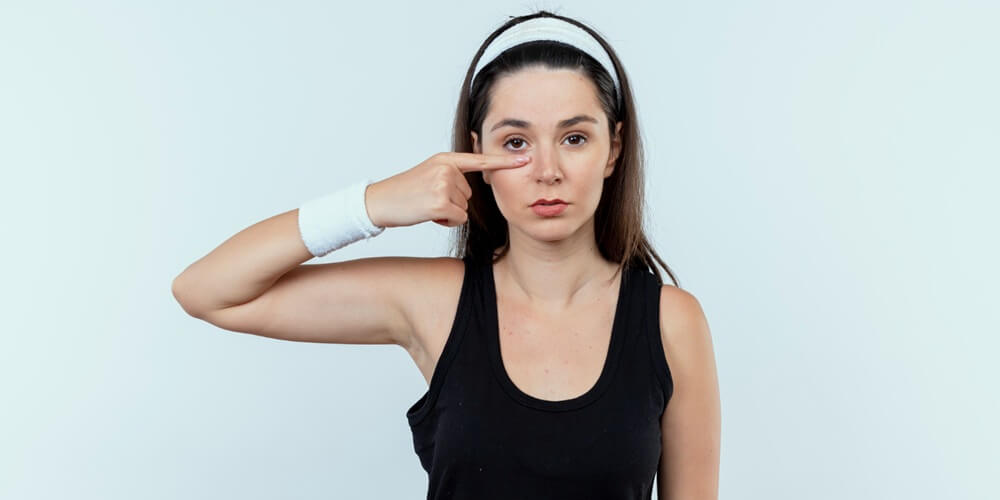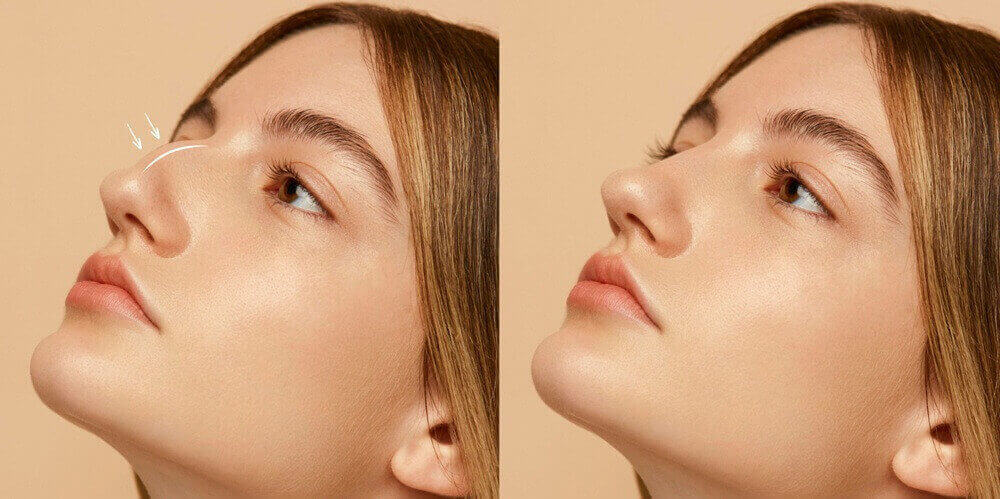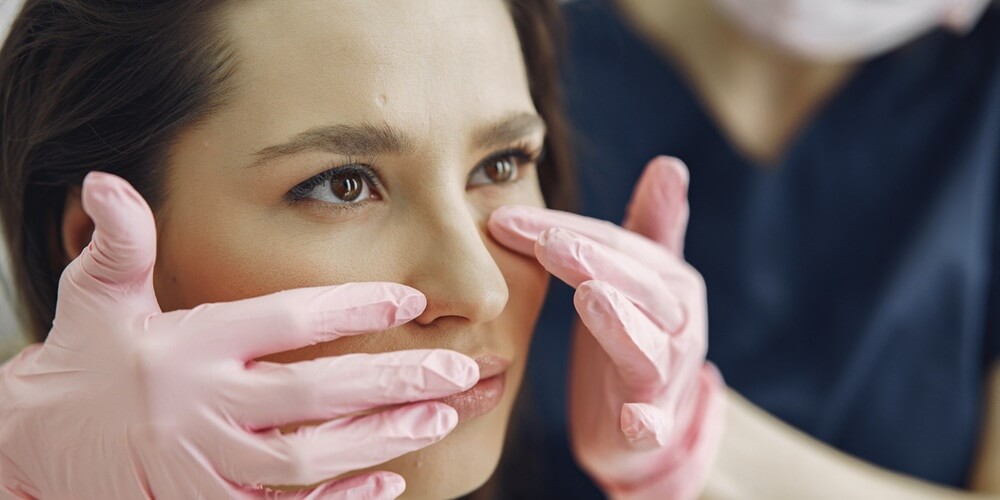Home » What Kind of Self-Confidence Will You Have After Rhinoplasty?

Rhinoplasty is a surgical intervention that predominantly seeks to correct dysfunctional aspects of the nose. Secondarily, it can enhance aesthetic appeal, boosting self-esteem, restoring self-image, and generating a positive change in patients’ lives. Aesthetic surgery presents a potentially greater psychological impact due to significant visibility. Aesthetic surgery differs from reconstructive function due to the lack of functional critique. Although rhinoplasty may refer exclusively to the surgical restoration and reconstruction of the nose, the motivation for functional correction may elicit an artistic, aesthetic issue.
Naturally endowed and well-functioning noses have played an important role in beauty ideals, for reproduction, selection, mate preferences, and pro-social behaviors, and have been associated with perceived intelligence, dominance, trustworthiness, and moral goodness. Facial attractiveness can enhance traits and ideals. The ear, lips, and nose have a great advantage due to their location. The nose occupies the central position of the face. Enhancing the aesthetic aspect of injured or natural faces is an interesting and valuable goal, while it is not easy to find the ideal.

In recent years, Turkey has become a popular country for rhinoplasties. Within the context of plastic surgery, rhinoplasty is known as “nose job,” yet this change on the nose brings cosmetic transformations that affect facial aesthetics. However, the unmet expectations related to the surgery symbolize a negative and unintended psychological outcome for the carried surgery. The importance of the first impression increases the individuals’ desire to have aesthetic surgery. Both successful and failed aesthetic surgery change people’s perceptions of beauty. Satisfying, unsuccessful aesthetic surgeries affect how people see each other in a bad way.
The first thought when it comes to Rhinoplasty in Turkey is that quality of the operations is quite successful, the price is very cheap, and the surgeons are experienced. Turkey is becoming a favorable destination for cosmetic surgery trips. The other reason is the demands. Young people feel pressure by the beauty ideals set by social media and some celebrities. Its foreign and domestic clients have accelerated their surgical requests. In addition, individuals in Turkey traveled abroad for cheap operations. In a short while, Turkey has taken its duty as a tourist destination for aesthetic operations and it got rid of the opposition to go abroad. Many years ago, Turkish rhinoplasty patients abroad underwent these aesthetic operations for either results or economic reasons.

Rhinoplasty is a special field in plastic and aesthetic surgery. Various factors that are not only related to surgery are included in the thoughts of both patients and surgeons. An appropriate selection should be made in terms of psychological, aesthetic, and physical well-being. The assessment of the surgical approach that will achieve an aesthetically satisfying nose for the patient is directly associated with how close the result will be to the desired nose. This paradigm is more challenging in rhinoplasty than the other fields of aesthetic surgery. An in-depth examination should be done in order to understand the desires that the patients have in their minds, and proper communication techniques should be used to uncover any unrealistic desires. Patients are usually faced with serious problems when seeking rhinoplasty surgery, unless they have had previous nasal problems, such as chronic rhinopathy, nasal obstruction, and fracture. Patients usually want to change their nose, believe that rhinoplasty will provide an aesthetic change, and consider this change as a stress-coping mechanism. In this context, rhinoplasty has effects that exceed local changes, and considering these effects affect the most important continuity between cosmetic surgery and psychiatry, the demand for rhinoplasty provides an aesthetic change link related to coping with emotional stress.
Since rhinoplasty before and after can reflect a person’s facial characteristics directly and can partially change an essential component of the body schema, the face-nose interaction and adequate nose projection are important in understanding the aesthetic proportion and physical beauty. However, rhinoplasty is known to have one of the highest rates of dissatisfaction in terms of surgical results compared to other aesthetic surgery types. In the present study, it will be evaluated how rhinoplasty surgery, which is highly preferred in the aesthetic field, affects preoperative and postoperative mental conditions, and what kind of aesthetic expectations patients have about this surgery.
The cost of rhinoplasty may differ significantly based on different factors. Cosmetic surgery procedures are typically not covered by any health insurance plan because they are deemed elective. Even surgical processes that have only a cosmetic indication and that are medically required are seldom included in insurance policies. The cost of nose job is therefore borne exclusively by the patient. In the case of rhinoplasties, especially in joint responses, some exceptions apply. Some indicate that the expenses of a rhinoplasty with a cosmetic indication must also be covered by insurance because the aesthetic and psychological problems of the patients should be solved.
Cost Factor | Details | Estimated Cost Range |
Surgeon’s Experience | Board-certified, internationally recognized surgeons charge more | +$1,000 – $5,000 |
Geographic Location | Costs vary significantly by country and region | USA: $5,000–$15,000 |
Type of Rhinoplasty | Open is more complex than closed; revision is the most expensive | Closed: $2,000–$5,000 |
Facility Fees | Clinic or hospital charges for operating room, equipment, etc. | $500 – $2,500 |
Anesthesia Fees | General anesthesia costs more than local | $500 – $1,500 |
Post-Op Care & Medications | Includes dressings, antibiotics, pain meds, follow-up appointments | $200 – $1,000 |
Travel & Accommodation (if abroad) | Relevant for medical tourism; may be included in packages | $500 – $2,000 (or included) |
All-Inclusive Packages (Turkey) | Often include surgery, hotel stay, VIP transfer, follow-up, interpreter | $2,500 – $4,000 |
Always request a detailed quote before booking, and ask what is included (consultation, surgery, meds, post-op visits, revisions, etc.). Be cautious of unusually cheap offers—they may lack essential safety or aftercare support.

Rhinoplasty has numerous psychological effects and aesthetic impacts on the subjects who have undergone the operation. These effects influence the decisions of the candidates for the rhinoplasty operation. Rhinoplasty psychological effects can be classified under some titles such as the impact on self-confidence, influence on self-esteem, and long-term psychological outcomes. Patients’ desires for improving their aesthetic appearance generally increase after undergoing rhinoplasty. The psychological effects of nose job changes acquired may differ pre- and postoperatively. Positive satisfaction increases within a year after surgery appreciation. Especially, the overall satisfaction score was significantly higher in patients who desire better acceptance by the society. Similarly, an improvement over aesthetic perception was also observed pre- and postoperatively. The reasons patients express for being unhappy with their aging nose range from common concerns, such as a “hooked nose” or a “large nose,” to more serious problems, such as trauma and birth defects. Colleagues generally agree that patients considering cosmetic rhinoplasty surgery are typically unhappy for years before they go through the experience, and they can also experience a psychological symptom called rhinoplasty disorder.
Returning to the relationship between the aesthetic value of the rhinoplasty result and the associated psychological benefits, there are mixed results in the literature: although a large number of studies demonstrate an improvement in the self-image of patients after surgery and its positive correlation with the aesthetic satisfaction, other publications criticize the importance of the achieved aesthetic status, or the aesthetic result may not be so relevant. Some even observe a worse postoperative psychological state, and especially the self-esteem.
In the publications where rhinoplasty is performed without any aesthetic goal, the patients express an improvement in their self-confidence and an alleviation of associated discomfort, not linking it to a direct aesthetic change. In these series, the preoperative patient develops a feeling of body dissatisfaction, regardless of the physical change, which is reflected in other aspects of life. Although rhinoplasty serves to modify a perceived unattractive aspect of the body and improve the body image, the physical change is not always evaluated, nor is it linked to the improvement in the psychological aspect. However, it has been demonstrated that the aesthetic change can also modify self-respect, and the opinion of the social environment of the patient on the physical change has an influence on the levels of self-esteem.
There are several reasons why people undergo cosmetic surgery. Sociocultural factors can lead people to believe that correcting a facial defect, such as a large or misshapen nose, may enhance their attractiveness and increase their self-esteem. People with a perceived or obvious defect on their face or when they are looking at themselves on the computer, cellphone, or online video may feel insecure and self-conscious. When they interact with others in person, they may look down or away to avoid exposing a perceived defect. They may be ridiculed or subjected to bullying on social media for having a facial defect. This ridicule can result in years of mental anguish and feelings of avoidance and rejection. An unsatisfactory romantic relationship may occur because of lowered self-esteem or difficulty making and keeping friendships. For all these reasons, individuals may decide to have treatment for their facial appearance. Rhinoplasty can also help individuals suffering from nasal deformities, airway obstruction, past nasal trauma, and congenital deformity.
It seems natural that if you are living with a facial defect that is unflattering, you would ask yourself, “Will rhinoplasty enhance my self-esteem or change my life?” For those considering a nose job, you should ask the surgeon if there is evidence to support the claim that rhinoplasty increases self-esteem. A better question to ask is, “How long will that added self-esteem last?” Numerous studies have looked at this very question. Some studies showed no change or decrease in self-esteem, while others indicated increased self-esteem. This confusion may arise from the study population, how the study population was selected, or how self-esteem was assessed or defined. But researchers consistently warn that patients expecting a dramatic increase in self-esteem may be disappointed.

Most patients are satisfied with their decision, and rhinoplasty is one of the few plastic surgeries to garner extremely high rates. Satisfaction in patients who had the surgery for medical conditions may not be as high as other rhinoplasty patients, with about 72.1% of them expressing that they were happy with their decision. Patients who had surgery for traumatic and congenital deformities showed the highest satisfaction rates.
Difficulty of rhinoplasty is subjective. However, rhinoplasty can become particularly difficult in ethnic patients, especially those with thick skin and a low bridge. Most surgeons opting for open rhinoplasty line the incision just inside the lower part of the nostrils where it almost appears invisible. There also may be a risk of internal scarring and a reduced sense of smell if the internal approach is opted for.
Revision rhinoplasty, also called secondary rhinoplasty, may appear static for five to ten years for only a small number of patients. In this interval, about 3.5 to 20% of the initial patients may require revision rhinoplasty, and more frequent revisions with follow up longer than 20 years may be expected. Issues with the initial surgery may include dissatisfaction with the appearance of the nose or its inability to function properly, such as obstructed nasal airways and dislodged bones.
Hello!